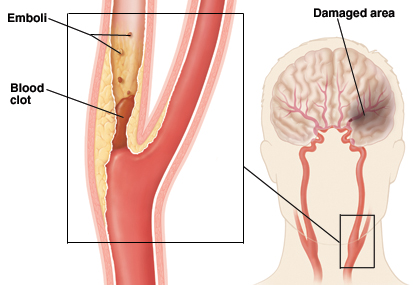Carotid Artery Problems: Blockage
Carotid Artery Problems: Blockage
The blood carries oxygen and nutrients throughout the body. The carotid arteries are large blood vessels that carry blood to the brain. Certain health problems can make the inside of the carotid arteries narrow and rough. Over time, this damage increases the chances of having a stroke. A stroke is a sudden loss of brain function.
Open carotid arteries
In a healthy carotid artery, the inside of the artery is open. The lining of the artery wall is also smooth. This lets blood flow freely from the heart to the brain. The brain gets all the oxygen and nutrients it needs to function well.
Narrowed carotid arteries
Health factors, such as high blood pressure, high cholesterol, smoking, and diabetes, can damage artery walls and make them rough. This allows cholesterol and other particles in the blood to stick to the artery walls and form plaque or fatty deposits. As the plaque builds up, it can narrow the artery. Blood may also collect on the plaque and form blood clots.
How a stroke happens
A stroke can happen when plaque in the carotid artery ruptures. This can allow small pieces of plaque to break off into the bloodstream. At the same time, rupture can make more blood clots. The pieces of plaque and tiny blood clots or emboli can flow in the blood until they get stuck in a small blood vessel in the brain. This blocks blood flow to part of the brain and causes a stroke.
Updated:
March 20, 2017
Reviewed By:
Foster, Sara, RN, MPH,Image reviewed by StayWell medical illustration team.,Kang, Steven, MD

